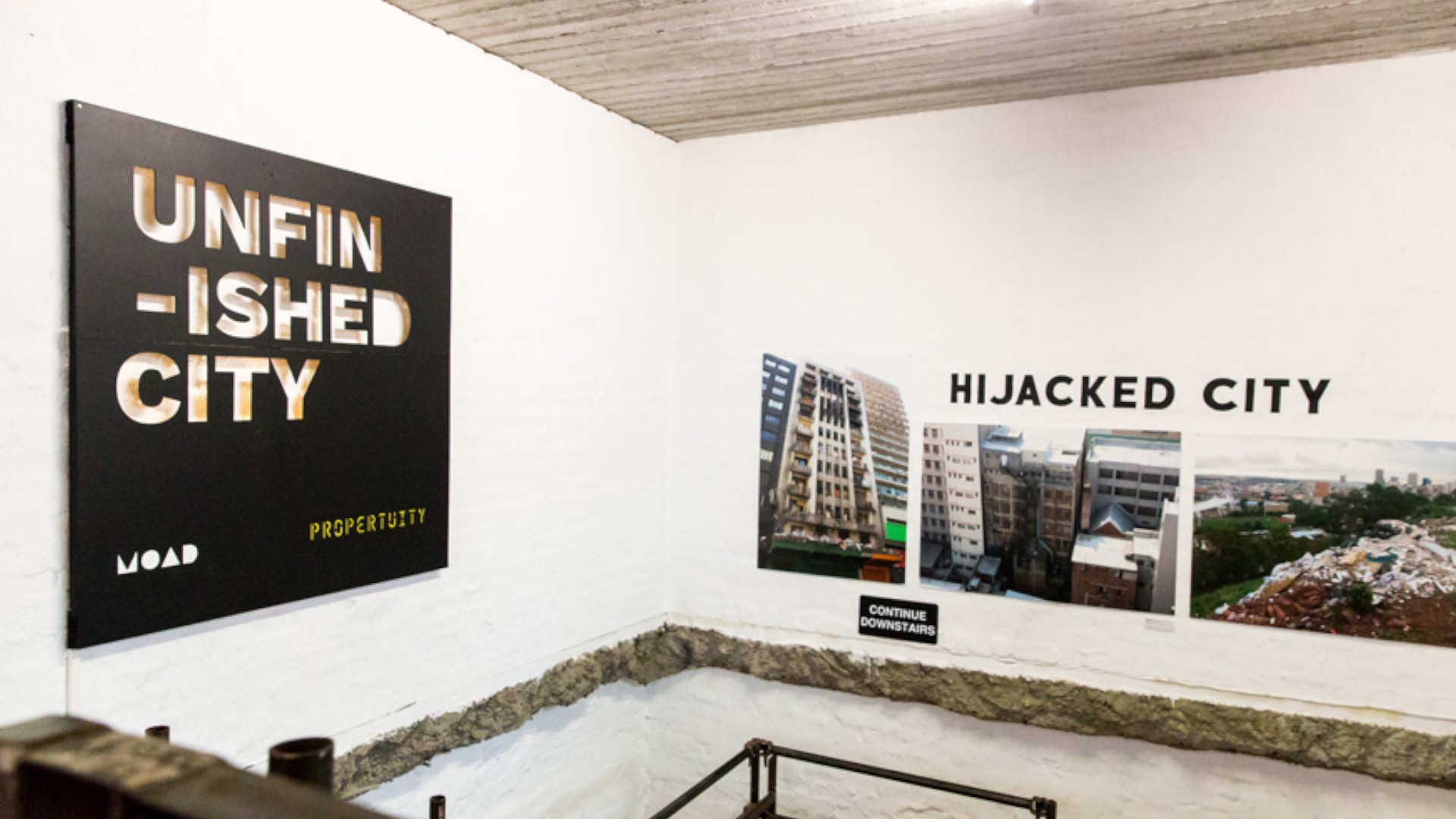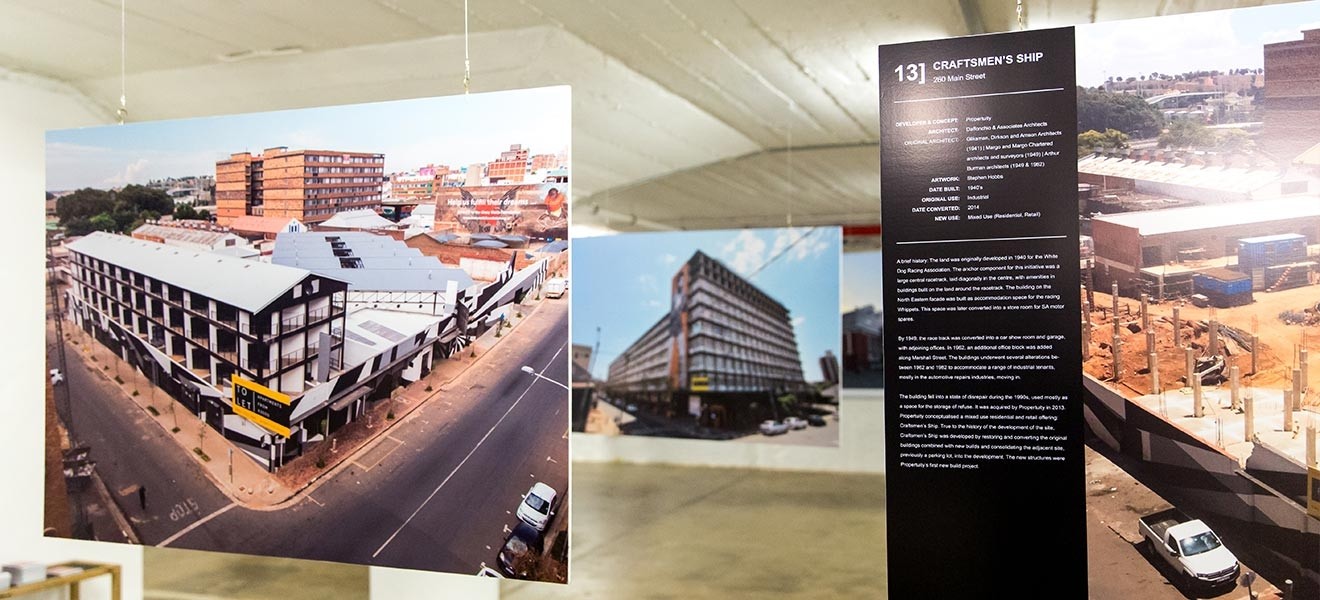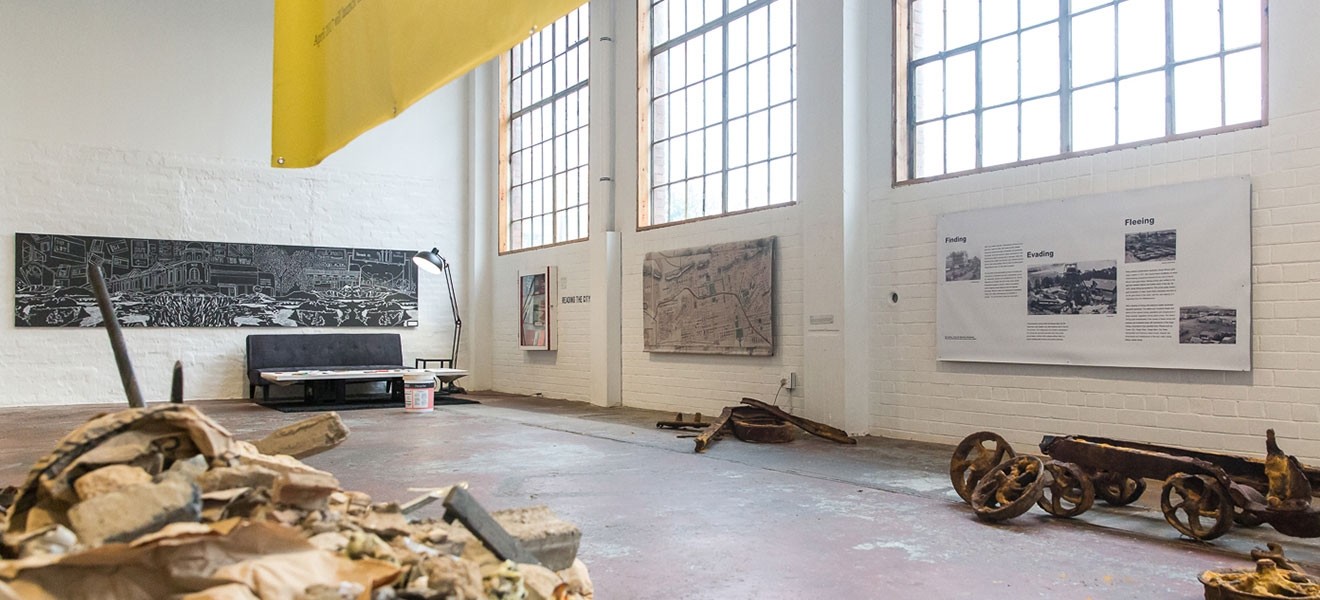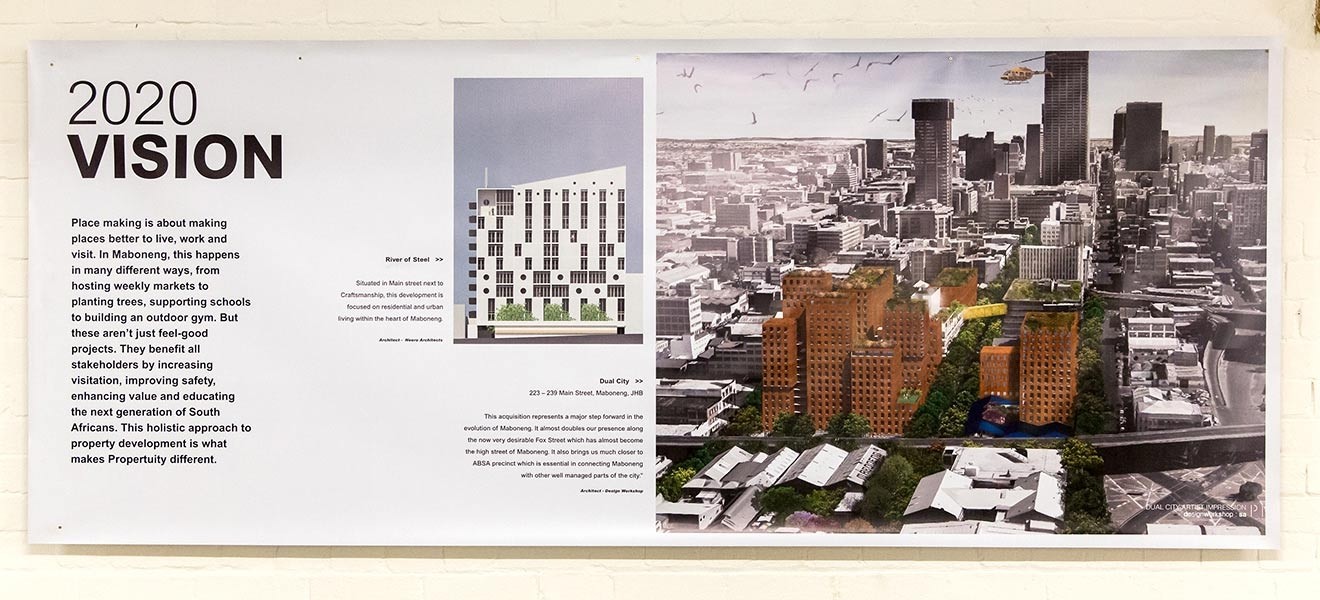Our tool for managing your permission to our use of cookies is temporarily offline. Therefore some functionality is missing.

UNFINISHED CITY.
An exhibition at the Museum of African Design (MOAD) in Joburg’s Maboneng Precinct explores the making and shaping of the city that was never meant to be.
“Johannesburg was never meant to exist; gold was to be mined with the land left behind.” This is the starting point of Unfinished City, the latest exhibition at the MOAD. But the city is still there, 103 years later. And in pockets of the CBD, like the Maboneng Precinct, it is constantly being refreshed and reinvented.
The exhibition is based on the premise that the city that shouldn’t have been, still isn’t quite and perhaps never will be. It remains in a state of constant becoming – a series of ideas, one on top of another.
Maboneng itself began with a crazy idea that a bunch of warehouses on the eastern edge of the CBD could be converted into a market. Starting with five buildings, the market drew Sunday crowds keen for an urban fix. Now Propertuity, developers of the Maboneng Precinct, own upward of 70 buildings in the area, including flats, hotels, cinemas, galleries, shops, offices, gyms, bars. Its biggest project to date, Hallmark House is a reinvented diamond polishing factory that is 66 floors high. British Ghanaian starchitect David Adjaye redesigned it. Billed as Africa’s most enviable address, it is already almost sold out.
“This once ‘no-go’ area is now open to everyone, and carries little baggage from the segregated and gated suburbs,” says Aaron Kohn, executive director of the MOAD.
The architecture, as evident in David’s comments on Hallmark House, aims to “combine an African aesthetic with a contemporary vision” and form a new typology for urban living.

“The transformation of Hallmark House is an opportunity to apply fresh thinking to urban community and to address changing lifestyles with a more fluid approach to the way we inhabit cities,” says David.
This is clearly why Aaron says: “The most important takeaway for anyone coming into Jeppestown is the design. This Unfinished City has not been demolished, fragmented or sterilised. Architects from around the world have redesigned existing structures, upcycling the built environment.” In fact, he says, the connection between design and urban renewal was the very reason that the MOAD was founded three years ago.
“As we saw it, there is a natural fit between what it means to redevelop part of Johannesburg’s struggling downtown and design,” says Aaron. “Urban design, architecture, industrial design and graphic design have all played a role in the precinct. Fashion designers and entrepreneurs have moved their operations into the MOAD and the surrounding buildings. Those trying to make parts of downtown Johannesburg clean, safe and attractive to residents and tourists alike are all facing huge design challenges.”
He goes so far as to call the entire city a “design experiment”. Thus, any reflection on the city or its development, its “history and uncharted future” as Aaron puts it, is a reflection on design, and he argues that its future fate rests in “broad design thinking”.
Maboneng, as an example of the city’s constant self-reinvention, is a multi-layered design experience. Like Hallmark House, none of the buildings is new.
“Each building is one-of-a-kind because of its heritage and new purpose,” says Aaron.
The old city exists underneath, and the past and future are layered over it. Unfinished City includes work by some of Joburg’s most influential designers and, by reflecting on the city, they are peeling away those layers like the layers of an onion.
These designers include Adjaye Associates, who designed Hallmark House, and Daffonchio & Associates Architects, who are responsible for much of the architecture in and around the precinct. It also comprises displays by Urbanworks (see our interview with Thiresh Govender), Shaun Gaylard of Blank Ink Design and Naadira Patel of Inner City Colouring Books, whose designs constantly reflect the architecture and design of the city.

BY REFLECTING ON JOHANNESBURG, SOME OF THE CITY’S MOST INFLUENTIAL DESIGNERS ARE PEELING AWAY THE LAYERS OF THE OLD AND NEW CITY.
Joburg’s rich literature is also woven into the exhibit, with references to memoirs of the city, such as Lost and Found in Johannesburg: A Memoir by Mark Gevisser and Portrait With Keys by Ivan Vladislavic. These references can also be found in fiction, with the likes of Ways of Dying by Zakes Mda and After Tears by Niq Mhlongo.
The exhibition itself, which is in the centre of the CBD, becomes the centre of the onion. And at the centre, what does one discover? Another series of designs and layers to peel away… The message is that everything in this city is a layer upon a layer. There is no centre. Instead, as the intro to the exhibition notes, “what remains is the potential for one of the world’s great urban centres.”
For more about Unfinished City, contact the MOAD on +27 10 500 2448.


